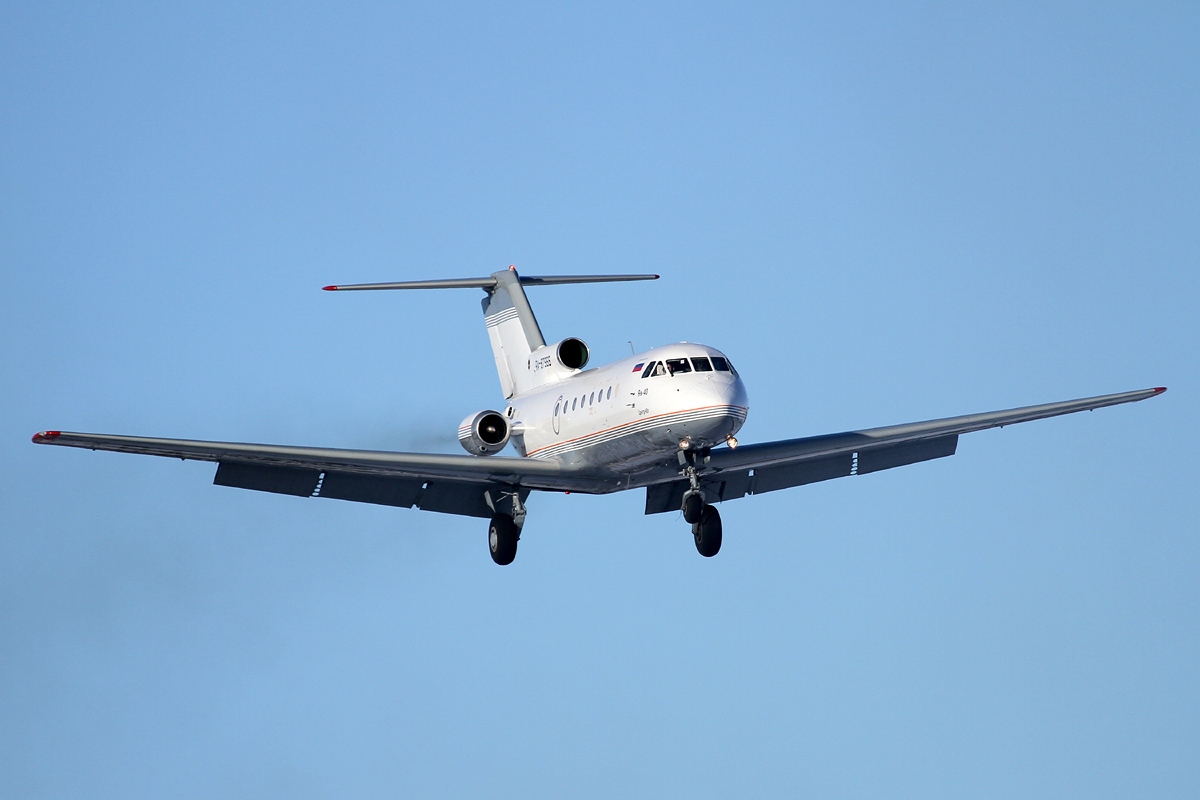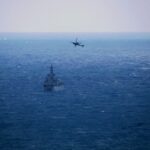Novosibirsk, Russia – A Yakovlev Yak-40 flying laboratory lifted off from SibNIA’s Yeltsovka airfield on July 14, logging the first airborne run of UZGA’s new VK-800 turboprop. The 15-minute sortie reached roughly 700 meters and about 340 kilometers per hour. Test crews reported smooth spool-up, steady power delivery, and no abnormal vibrations as the nose-mounted propeller drove the veteran trijet around the circuit.
According to industry sources, the green light for this flight came after a month of ground runs that exercised the start system, prop-feather logic, and digital engine control. The goal now is to gather in-flight data that will shorten certification work on the LMS-901 “Baikal” utility aircraft, the UTS-800 basic trainer, and the twin-engine LMS-192 regional design. Placing a single VK-800 in the Yak-40’s radome area allows engineers to check thermodynamics and inlet aerodynamics without rebuilding the wing.
The VK-800 is a single-shaft, reverse-flow engine rated at 595-655 kW (800-877 hp) for take-off, depending on the installation. A centrifugal compressor feeds an annular combustor; power exits through a free two-stage turbine coupled to the AV-901 four-blade propeller. Developers kept the power section short, which trimmed the length of the forward pylon and simplified weight-and-balance work on the testbed.
SibNIA’s avionics team fitted the cockpit with a compact data-acquisition stack that streams more than 200 parameters to a ground station in real time. Engineers watched exhaust-gas temperature, gearbox torque, and vibration signatures while the crew ran a gentle climb and level segment. A planned series of ten flights will expand the speed range to 500 km/h and altitudes to 4 000 m. Defense officials confirm that the first three sorties will stay inside the local area before the aircraft moves to UZGA’s facility at Ekaterinburg for higher-altitude work.
Test-pilot Sergei Antonov described the initial hop as “uneventful in the best sense.” He noted that the new prop disc sits well ahead of the cockpit, so blade tips generate no noticeable buffet on the windshield. Ground observers added that the propeller noise remained within local limits, easing eventual airport approval for civilian platforms that adopt the engine.
The powerplant traces its modern iteration to 2019, when UZGA revived an earlier Klimov study and recast it around all-Russian supply chains. Factory endurance runs began in 2023, accumulating 1 000 cycles on two development units. The current flight-test campaign must clear inflight shutdown and relight demonstrations by early 2026 to meet the Federal Air Transport Agency’s schedule for the Baikal commuter.
Milestones now scheduled:
- August 2025 – engine relight at 3000 m
- October 2025 – icing-condition sortie from Yakutsk base
- January 2026 – 90-hour block endurance on LMS-901 prototype
The Yak-40 goes back to the early 1970s. Its wide nose bay makes a handy test mount for new engines. That keeps new prototypes off risky first flights. Crews also kept the two side-mounted AI-25 turbojets. If a propeller fails, one of those jets can bring the plane home safely.
Engineers say the VK-800 uses about 10% less fuel than the old TV-O-100 engines. It also delivers roughly 20% more power. That boost lets the Baikal carry nine passengers and full fuel from short, 400-meter runways. Key parts – like the gearbox, starter-generator, and control unit – are field-swappable. You can remove each one without dropping the whole engine.
Certification work will also feed a re-engining package for locally assembled L-410 aircraft. UZGA plans a plug-and-play nacelle kit that slots into existing wing hardpoints, using the same AV-901 propeller. Analysts see that as a bridge program to keep regional carriers interested while the Baikal gains hours.
The current SibNIA campaign remains on track for completion by December, assuming weather holds and no major findings emerge. Our analysis shows that a two-year path from first flight to type approval remains doable if data trends match ground-test predictions and if supply chains avoid further delays.
Planned test-card highlights for the Yak-40 program:
- Propeller feathering and unfeathering across the envelope
- Automatic load-sharing trials between the turboprop and one turbojet
- Simulated single-engine approaches with the propeller idling
- Cold-soak starts at -30 °C next winter
Project managers caution that parts manufacturing remains tight, especially for gear-train bearings and cast turbine vanes. A second flight-worthy powerplant is due out of the assembly line in September, giving the team a spare for accelerated testing.
If the schedule holds, UZGA expects to deliver the first flight-worthy Baikal with production VK-800s to a state flight-test center in the third quarter of 2026. Sister programs will trail by six to nine months, reflecting different airframe-mount requirements rather than fundamental engine changes.
REFERENCE SOURCES
- https://www.flightglobal.com/aerospace/yak-40-testbed-carries-out-first-flight-with-uzga-vk-800-engine/163785.article
- https://en.topwar.ru/268024-otrabotal-ustojchivo-letajuschaja-laboratorija-jak-40-s-rossijskim-turbovintovym-dvigatelem-vk-800-vpervye-podnjalas-v-nebo.html
- https://aviationweek.com/aerospace/aircraft-propulsion/russia-flight-tests-new-vk-800-turboprop-engine-yak-40
- https://www.eplaneai.com/news/yak-40-testbed-completes-first-flight-with-uzga-vk-800-engine



